Uncategorized
Crypto Daybook Americas: Memecoins Take Off on Tron While Bitcoin Looks to FOMC

By Francisco Rodrigues (All times ET unless indicated otherwise)
Cryptocurrency prices are seeing a slight recovery from Tuesday’s decline with bitcoin (BTC) gaining 0.5% and the broader CoinDesk 20 Index (CD20) advancing 0.8% in the last 24 hours.
The drop came before the Federal Reserve’s policy decision due later today. Interest rates are forecast to remain unchanged at 4.25%-4.5%, so investors will instead be focused on macro outlook with a potential end to quantitative tightening (QT) in sight.
Since mid-2022, the Fed has been slowly shrinking its balance sheet, which inflated to $9 trillion to support the economy during the COVID era. An earlier-than-expected end to quantitative tightening, which has so far reduced the Fed’s balance sheet to $6.7 trillion, could boost risk assets like bitcoin.
An end to QT would see the Fed stop withdrawing liquidity from the market, potentially weakening the dollar and making crypto assets more attractive. Traders on prediction market Polymarket are essentially certain an end to QT will be announced before May.
Another boost for risk assets came from the Bank of Japan (BOJ), which held its benchmark interest rate unchanged, despite growing inflation in the country. The decision keeps Japanese bond yields steady, limiting the attractiveness of these assets and attracting less capital to traditional markets. Still bitcoin failed to respond.
Bitcoin’s appeal as an alternative store of value has been seeing growing recognition. The number of public companies buying bitcoin has more than doubled to 80 from 33 in just two years, according to data from River. Strategy, the largest corporate holder of BTC, has even detailed plans to sell $500 million in preferred stock to buy more.
Yet, growing tariffs threats have reignited inflationary risks as economic growth stagnates. The result could be stagflation, a situation that wouldn’t please market participants. Stay alert!
What to Watch
Crypto:
March 20: Pascal hard fork network upgrade goes live on the BNB Smart Chain (BSC) mainnet.
March 21, 1:00 p.m.: The SEC’s Crypto Task Force hosts a roundtable, open to the public, that will focus on the definition of a security.
March 24 (before market open): Bitcoin miner CleanSpark (CLSK) will join the S&P SmallCap 600 index.
March 24, 11:00 a.m.: Bugis network upgrade goes live on Enjin Matrixchain mainnet.
March 25: The Mimir upgrade goes live on Chromia (CHR) mainnet.
Macro
March 19, 2:00 p.m.: The Federal Reserve announces its interest-rate decision. The FOMC press conference is likely to be live-streamed 30 minutes later.
Fed Funds Interest Rate Est. 4.5% vs. Prev. 4.5%
March 19, 3:00 p.m.: Argentina’s National Institute of Statistics and Census releases GDP data.
Full Year GDP Growth (2024) Prev. -1.6%
GDP Growth Rate QoQ (Q4) Prev. 3.9%
GDP Growth Rate YoY(Q4) Est. 1.7% vs. Prev. -2.1%
March 19, 5:30 p.m.: The Central Bank of Brazil announces its interest-rate decision.
Selic Rate Est. 14.25% vs. Prev. 13.25%
March 20, 3:00 a.m.: The U.K.’s Office for National Statistics releases January employment data.
Unemployment Rate Est. 4.4% vs. Prev. 4.4%
March 20, 8:00 a.m.: The Bank of England announces its interest-rate decision.
Bank Rate Est. 4.5% vs. Prev. 4.5%
March 20, 8:30 a.m.: The U.S. Department of Labor releases employment data for the week ended March 15.
Initial Jobless Claims Est. 224K vs. Prev. 220K
Continuing Jobless Claims Est. 1890K vs. Prev. 1870K
March 20, 3:00 p.m.: Argentina’s National Institute of Statistics and Census releases Q4 employment data.
Unemployment Rate Prev. 6.9%
March 20, 7:30 p.m.: Japan’s Ministry of Internal Affairs & Communications releases February consumer price index (CPI) data.
Core Inflation Rate YoY Est. 2.9% vs. Prev. 3.2%
Inflation Rate MoM Prev. 0.5%
Inflation Rate YoY Prev. 4%
Earnings (Estimates based on FactSet data)
March 27: KULR Technology Group (KULR), post-market, $-0.02
March 28: Galaxy Digital Holdings (GLXY), pre-market, C$0.38
Token Events
Governance votes & calls
Arbitrum DAO is voting on registering the “Sky Custom Gateway contracts” in the “Router contracts” to enable users to bridge USDS and sUSDS through the official Arbitrum Bridge UI.
Frax DAO is voting on introducing the WisdomTree Government Money Market Digital Fund (WTGXX) as an on-chain reserve for Frax USD.
March 21, 11:30 a.m.: Flare to host an X Spaces session on Flare 2.0.
Unlocks
March 21: Immutable (IMX) to unlock 1.39% of circulating supply worth $14.16 million.
March 23: Metars Genesis (MRS) to unlock 11.87% of its circulating supply worth $146.8 million.
March 31: Optimism (OP) to unlock 1.93% of its circulating supply worth $28.22 million.
April 1: Sui (SUI) to unlock 2.03% of its circulating supply worth $150.22 million.
April 3: Wormhole (W) to unlock 47.7% of its circulating supply worth $118.05 million.
April 7: Kaspa (KAS) to unlock 0.59% of its circulating supply worth $12.3 million.
Token Listings
March 19: Hamster Kombat (HMSTR) and DuckChain (DUCK) to be listed on Kraken.
March 31: Binance to delist USDT, FDUSD, TUSD, USDP, DAI, AEUR, UST, USTC, and PAXG.
Conferences
CoinDesk’s Consensus is taking place in Toronto on May 14-16. Use code DAYBOOK and save 15% on passes.
Day 2 of 3: Digital Asset Summit 2025 (New York)
Day 2 of 3: Fintech Americas Miami 2025
Day 1 of 2: Next Block Expo (Warsaw)
March 24-26: Merge Buenos Aires
March 25-26: PAY360 2025 (London)
March 25-27: Mining Disrupt (Fort Lauderdale, Fla.)
March 26: Crypto Assets Conference (Frankfurt)
March 26: DC Blockchain Summit 2025 (Washington)
March 26-28: Real World Crypto Symposium 2025 (Sofia, Bulgaria)
March 27: Building Blocks (Tel Aviv)
March 27: Digital Euro Conference 2025 (Frankfurt)
March 27: WIKI Finance EXPO Hong Kong 2025
March 27-28: Money Motion 2025 (Zagreb, Croatia)
March 28: Solana APEX (Cape Town)
April 2-3: Southeast Asia Blockchain Week 2025 Main Conference (Bangkok)
April 3-6: BitBlockBoom (Dallas)
April 6-9: Hong Kong Web3 Festival
April 8-10: Paris Blockchain Week
April 15-16: BUIDL Asia 2025 (Seoul)
Token Talk
By Shaurya Malwa
More than 590 new tokens were issued on the Tron blockchain-based SunPump today, marking the highest issuance in four months and spurring Tron founder Justin Sun to post «tron meme szn» on X.
Sun later posted that trading fees will be «subsidized,» adding that every memecoin would be «back on Tron.»
SunPump allows instant trading without initial liquidity seeding, fueling the frenzy. It has pocketed $5.74 million in fees in the past 24 hours, reaching levels not seen since August.
Derivatives Positioning
Bitcoin futures open interest (OI) on centralized exchanges has risen above $55 billion, up 32% since Feb. 23, with OI in SOL and ETH futures remaining mostly stagnant. The market is clearly biased toward the leading cryptocurrency.
Positioning in the BTC CME futures, however, remains light, near February lows.
NEAR, TON and TRX are leading growth in perpetual futures open interest in the past 24 hours. NEAR stands out with negative cumulative volume delta, pointing to net selling.
Deribit-listed BTC and ETH options continue to show bias for short and near-dated protective puts.
Market Movements:
BTC is up 1.84% from 4 p.m. ET Tuesday at $83,576.60 (24hrs: +0.88%)
ETH is up 2.04% at $1,945.99 (24hrs: +2.6%)
CoinDesk 20 is up 2.2% at 2,624.87 (24hrs: +1.6%)
Ether CESR Composite Staking Rate is unchanged at 2.96%
BTC funding rate is at 0.0071% (7.74% annualized) on Binance

DXY is down 0.32% at 103.57
Gold is unchanged at $3,030.30/oz
Silver is down 1.24% at $33.70/oz
Nikkei 225 closed -0.25% at 37,751.88
Hang Seng closed +0.12% at 24,771.14
FTSE is down 0.15% at 8,691.31
Euro Stoxx 50 is up 0.15% at 5,493.38
DJIA closed on Tuesday +0.62% at 41,581.31
S&P 500 closed -1.07% at 5,614.66
Nasdaq closed -1.71% at 17,504.12
S&P/TSX Composite Index closed -0.32% at 24,706.07
S&P 40 Latin America closed unchanged at 2,476.87
U.S. 10-year Treasury rate is unchanged at 4.29%
E-mini S&P 500 futures are up 0.23% at 5,682.25
E-mini Nasdaq-100 futures are up 0.32% at 19,764.25
E-mini Dow Jones Industrial Average Index futures are up 0.16% at 42,004.00
Bitcoin Stats:
BTC Dominance: 61.62 (0.27%)
Ethereum to bitcoin ratio: 0.02329 (-0.30%)
Hashrate (seven-day moving average): 773 EH/s
Hashprice (spot): $47.30
Total Fees: 5.13 BTC / $428,677
CME Futures Open Interest: 154,060 BTC
BTC priced in gold: 27.2 oz
BTC vs gold market cap: 7.71%
Technical Analysis
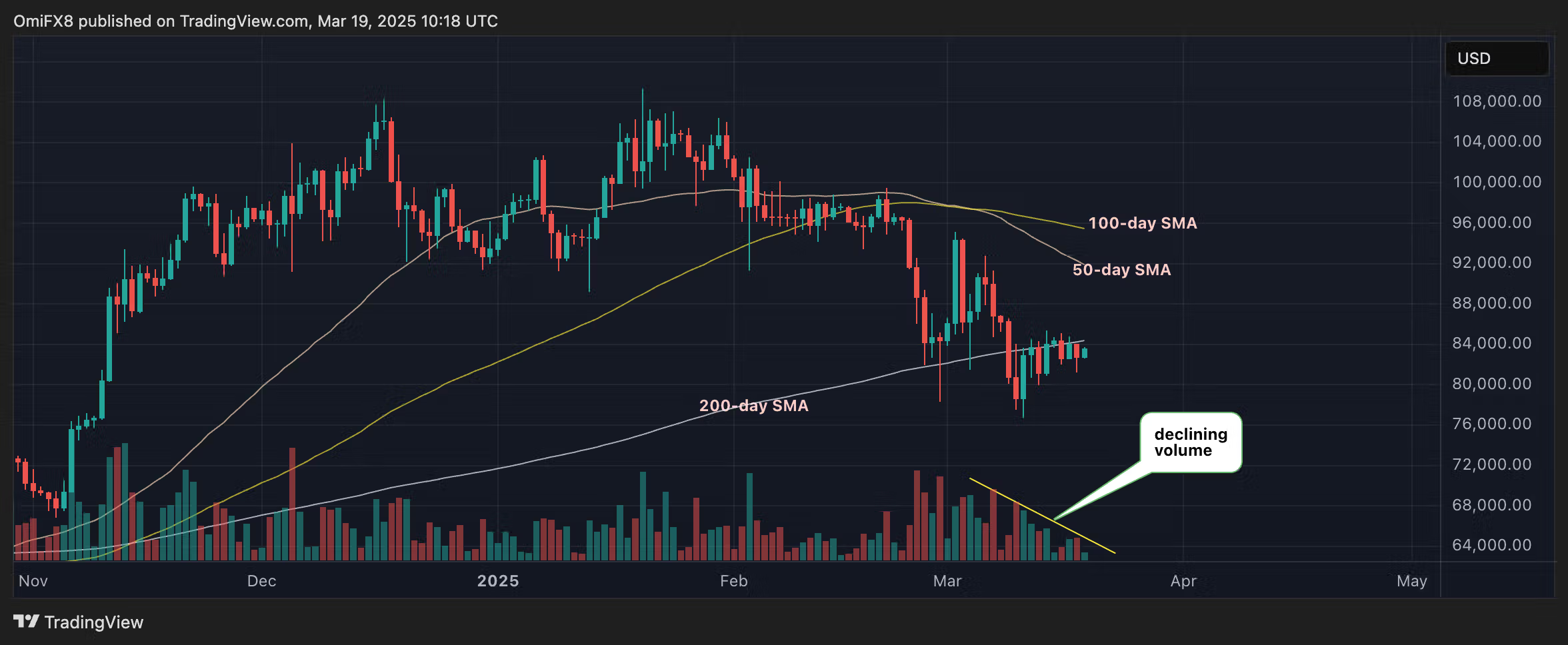
BTC’s recent bounce toward the 200-day simple moving average (SMA) is accompanied by a declining trend in daily trading volumes.
The discrepancy raises a question mark on the sustainability of the recovery.
Plus, the 50-day SMA has crossed below the 100-day SMA, a bearish signal that the path of least resistance is to the downside.
Crypto Equities
Strategy (MSTR): closed on Tuesday at $283.19 (-3.77%), up 1.95% at $288.47 in pre-market
Coinbase Global (COIN): closed at $181.14 (-4.14%), up 1.36% at $183.60
Galaxy Digital Holdings (GLXY): closed at C$17.09 (-1.5%)
MARA Holdings (MARA): closed at $12.07 (-6.94%), up 1.74% at $12.28
Riot Platforms (RIOT): closed at $7.40 (-4.64%), up 1.22% at $7.49
Core Scientific (CORZ): closed at $8.02 (-8.45%)
CleanSpark (CLSK): closed at $7.59 (-6.53%), up 1.98% at $7.74
CoinShares Valkyrie Bitcoin Miners ETF (WGMI): closed at $14.25 (-7.29%)
Semler Scientific (SMLR): closed at $35.49 (-1.5%), up 9.33% at $38.80
Exodus Movement (EXOD): closed at $30.26 (-6.46%)
ETF Flows
Spot BTC ETFs:
Daily net flow: $209.1 million
Cumulative net flows: $35.87 billion
Total BTC holdings ~ 1,116 million.
Spot ETH ETFs
Daily net flow: -$52.8 million
Cumulative net flows: $2.47 billion
Total ETH holdings ~ 3.472 million.
Source: Farside Investors
Overnight Flows
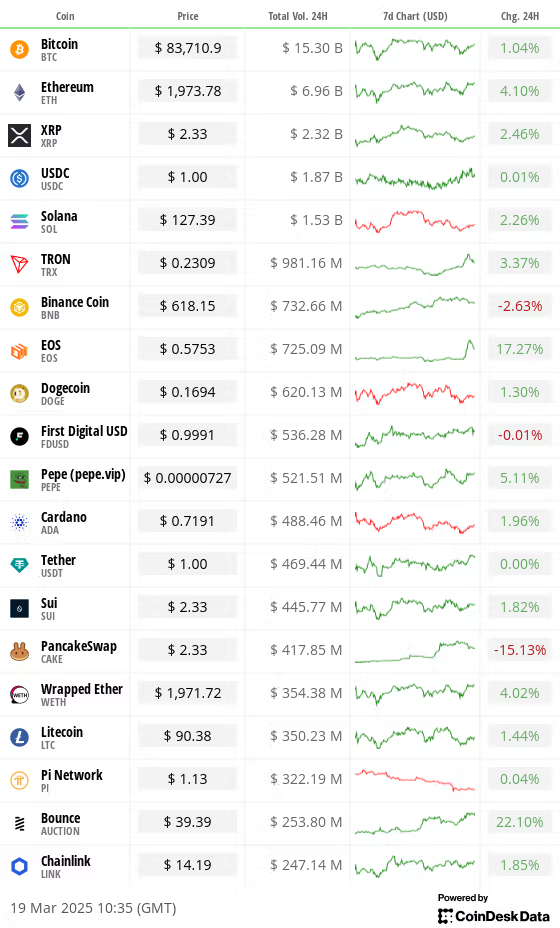
Chart of the Day
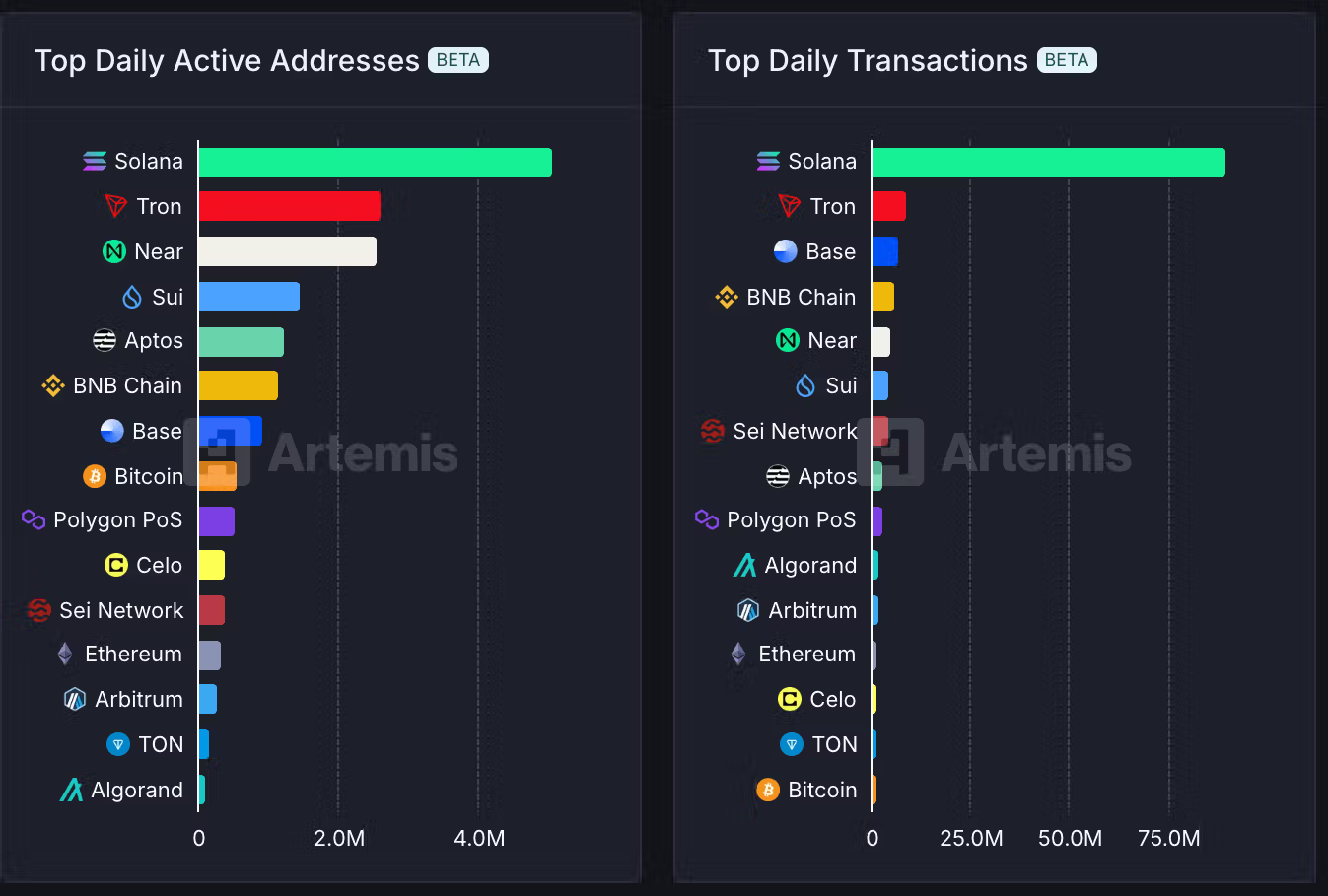
Programmable blockchain Solana leads other platforms with the highest number of daily active addresses and daily transactions despite a slowdown in the memecoin trading frenzy.
The data supports the bull case for the blockchain’s SOL token versus native coins of other smart-contract blockchains.
While You Were Sleeping
Investors Pump $22B Into Short-Term U.S. Debt to Ride Out Market ‘Storm’ (Financial Times): Investors, wary of Donald Trump’s economic policies, are moving into haven assets, with short-term Treasury funds seeing $21.7 billion in net inflows from early January to March 14.
Bank of Japan Keeps Interest Rates Steady, Warns of Trump Tariff Risks (Reuters): The central bank held its benchmark rate at 0.5%, as economists forecast. Governor Kazuo Ueda indicated that future rate policy is likely to reflect the effects of tariffs imposed by the U.S.
Drone Strike Sets Fire to Russia Oil Depot Near Damaged CPC Link (Bloomberg): Despite a proposal discussed Tuesday by Donald Trump and Vladimir Putin to halt attacks on energy infrastructure, a key Russian oil depot was struck by a Ukrainian drone early Wednesday.
Raydium’s RAY Jumps 13% as DEX Reveals Own Token Issuance Platform (CoinDesk): The Solana-powered decentralized exchange Raydium is reportedly planning to launch a platform named LaunchLab to increase revenue and expand its user base.
Untangled Finance Brings Moody’s Credit Scores On-Chain (CoinDesk): The proof of concept system, powered by Polygon’s Amoy testnet, uses zero-knowledge proof technology to securely publish, update and withdraw credit ratings on-chain, protecting proprietary information.
North Dakota Senate Passes Crypto ATM Bill to Create Licensing Regime (CoinDesk): House Bill 1447 requires crypto ATM operators to issue fraud warnings, obtain money transmitter licenses, use blockchain analytics software for fraud detection, submit quarterly reports and appoint a compliance officer.
In the Ether
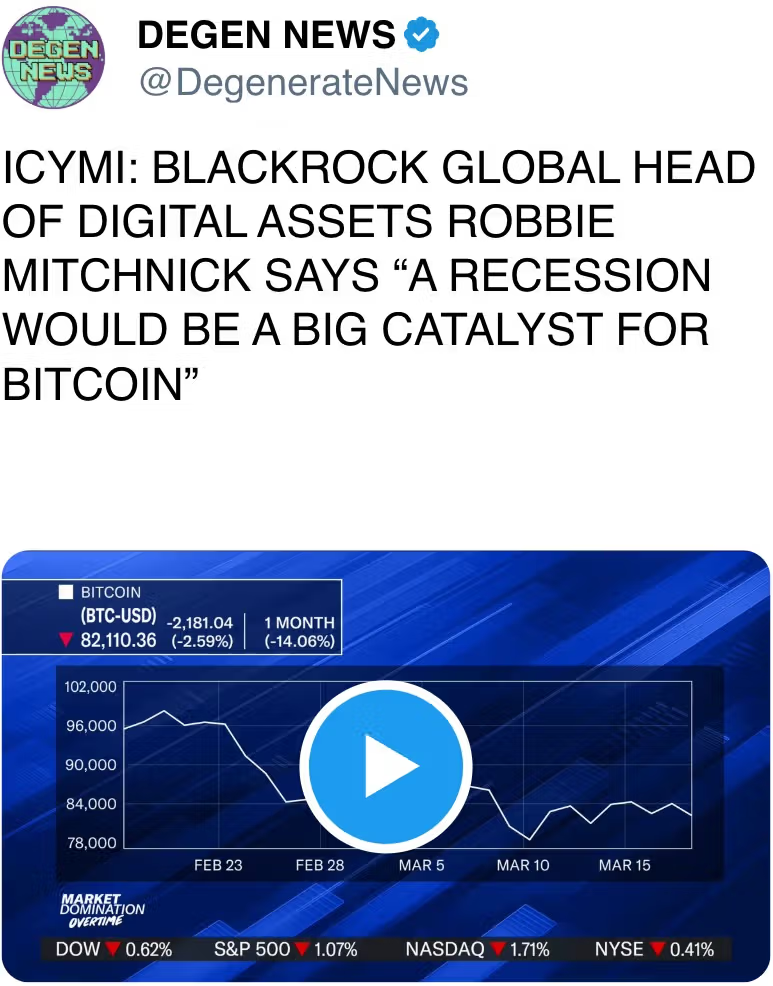
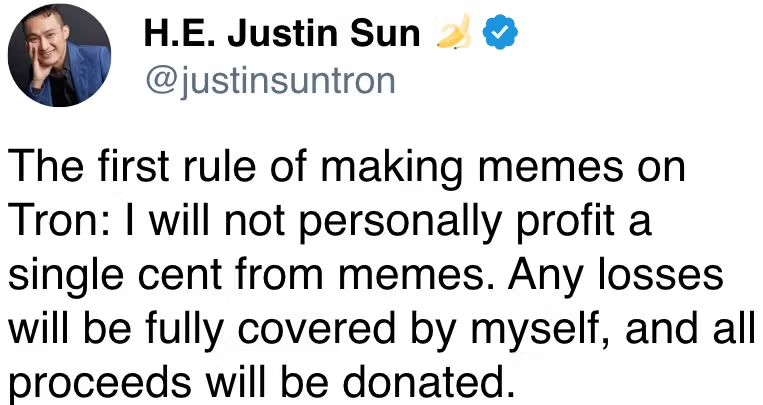
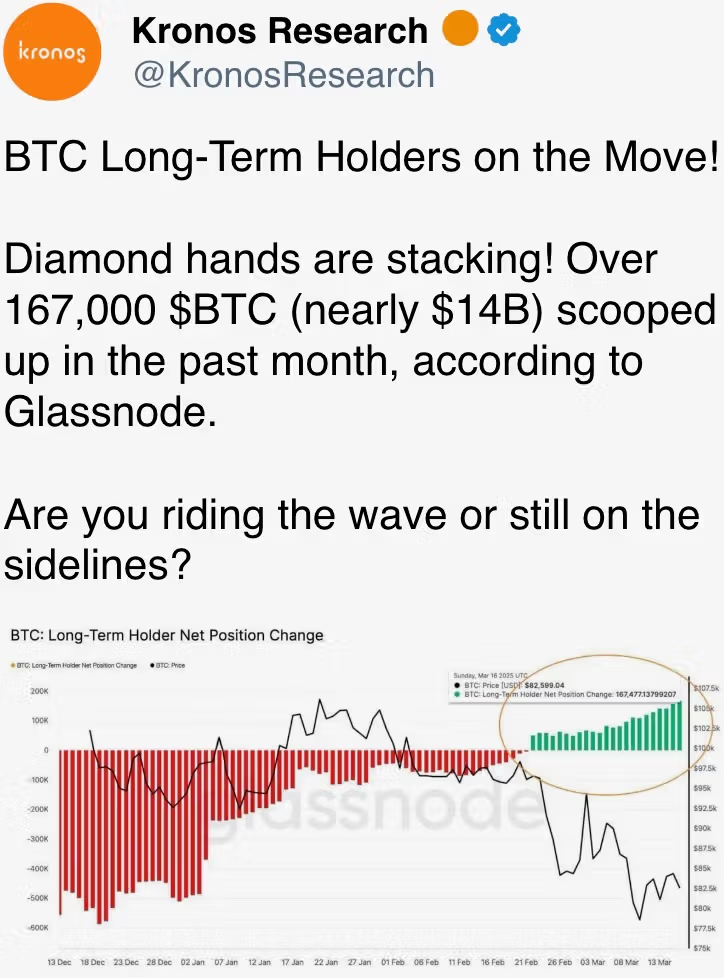
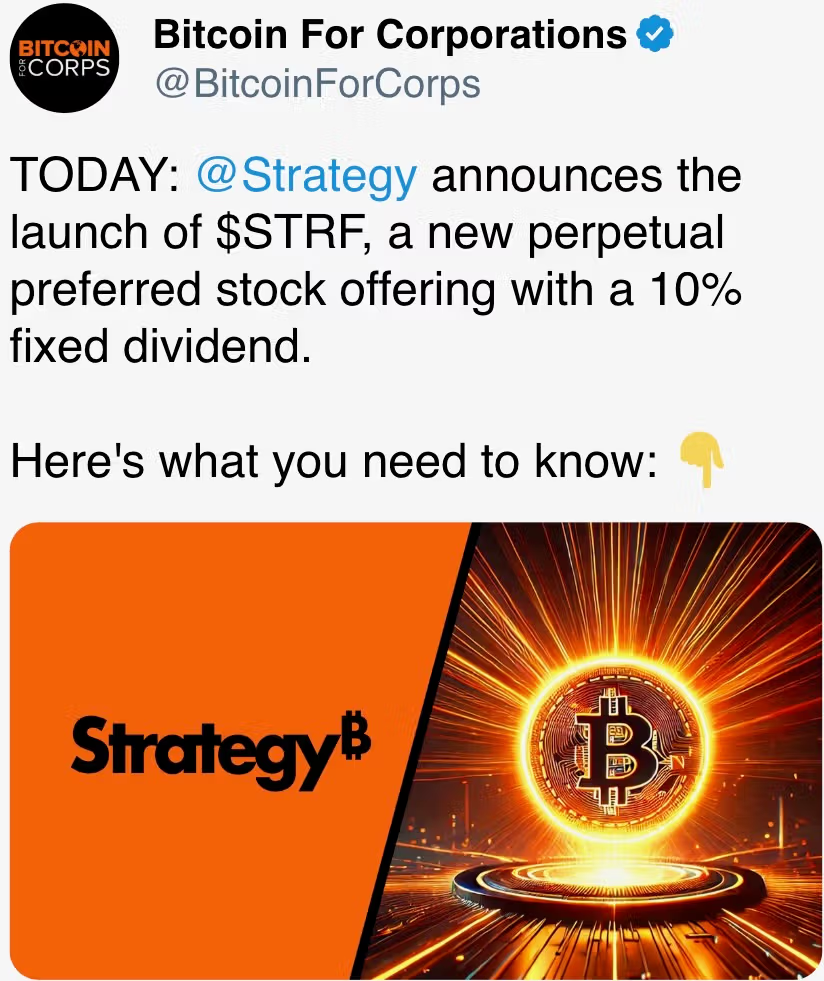
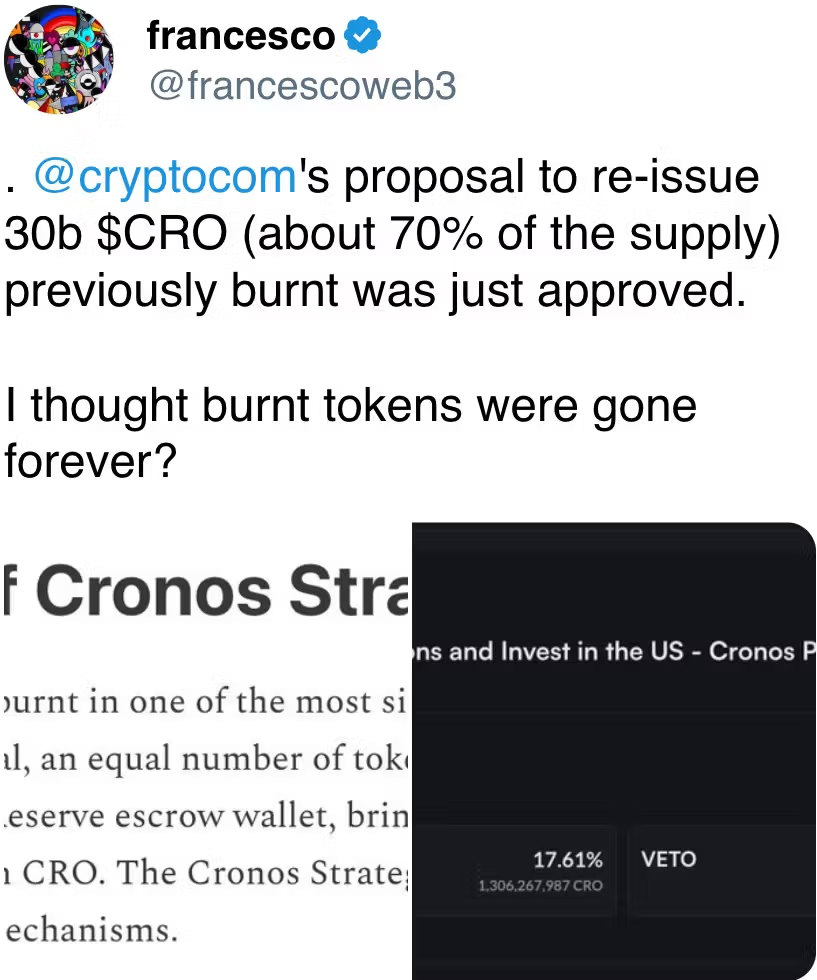
Uncategorized
SEC Charges Unicoin, Top Executives With $100M ‘Massive Securities Fraud’

The U.S. Securities and Exchange Commission sued crypto company Unicoin and three executives on Tuesday night on fraud charges, saying the company raised over $100 million for tokens that were not actually backed by the real estate its executives claimed.
The SEC sued Unicoin, CEO Alexander Konanykhin, former board chair Maria Moschini, senior vice president and general counsel Richard Devlin and former chief investment officer and investor relations officer Alejandro Dominguez on securities law violations,
Among its allegations, the SEC said Unicoin never actually owned the real estate properties it told investors it had acquired, and that those properties’ values were inflated.
«For example, between September 2023 and January 2024, the Promoting Defendants announced acquisitions of properties in Argentina, Thailand, Antigua, and the Bahamas, purportedly with appraised values totaling more than of $1.4 billion; in fact, the majority of those transactions never closed and the actual combined value of the four properties was no more than $300 million,» the complaint said.
The defendants also «overstated the Company’s sales» of its rights certificates, suggesting in social media posts and to investors that it had raised far more funds than it actually had, the SEC alleged. While Unicoin claimed it had made $3 billion in sales by June 2024, it actually never sold more than $110 million in its rights certificates, according to the complaint.
Moreover, Unicoin advertised its rights certificates, including by promising outsized returns of up to 9 million percent, the SEC alleged, pointing to marketing efforts on taxi cabs, ferries, «office building elevator screens,» digital billboards, coasters, television programs, news websites and public wi-fi kiosks.

«Additional examples of the Promoting Defendants’ statements include: (a) social media and website posts that touted potential returns of 9,000,000% based on bitcoin’s 9,000,000% growth in the past 10 years and told investors to ‘take advantage of the early days of Unicoin and get them today,’ highlighting that ‘Bitcoin experienced a tremendous rise in value, transforming early adopters into millionaires, and even billionaires,'» the filing said.
Read more: Unicoin CEO: Why Are We Still Under the SEC’s Gun?
Unicoin received a Wells notice from the SEC last December, informing the company that the regulator — then under the leadership of former Chair Gary Gensler — intended to file securities fraud charges. Last month, Konanykhin sent a letter to Unicoin’s shareholders, informing them that the company had rebuffed the SEC’s attempt to settle the charges, rejecting what he described as an “ultimatum” to attend a settlement negotiation meeting by April 18.
“We declined to show up,” Konanykhin told CoinDesk in an April interview, adding that the SEC had made certain pre-meeting demands he deemed “unacceptable” and claiming that the SEC’s probe had caused “multi-billion-dollar damages” to the company.
Read more: Unicoin CEO Reject’s SEC’s Attempt to Settle Enforcement Probe
Neither Konanykhin nor a spokesperson for Unicoin responded to CoinDesk’s request for comment by press time. In a press release shared earlier this year in response to a Wall Street Journal article, a spokesperson said, «Unicoin, the only fully U.S.-registered, U.S.-regulated, U.S.-audited, and U.S.-publicly reporting cryptocurrency company, has consistently complied with all regulations.»
According to court documents, the SEC is seeking disgorgement and civil penalties.
Uncategorized
Apex Group Buys Majority Stake in Tokenization Specialist Tokeny as RWA Trend Soars

Apex Group, a financial services provider with more than $3 trillion in assets under administration, said on Tuesday it had acquired a majority stake in Tokeny, a Luxembourg-based firm that helps institutions tokenize real-world assets (RWA) on public blockchains.
According to the deal, Apex expects to take full ownership of Tokeny over the next three years, after first investing in the company in late 2023, Apex said in a press release. The companies did not disclose the terms of the acquisition in the press release, and a spokesperson did not immediately return a request for comment.
The acquisition comes as more traditional financial firms are looking at tokenization as the next frontier in capital markets, using blockchain technology for moving assets like bonds, funds and other securities.
For institutional investors, the process promises simpler cross-border transactions, faster settlement and new liquidity channels. Tokenized assets could be a $18 trillion market by 2033, a report from BCG and Ripple last month projected.
«Tokenization is a foundational shift in how assets will be managed, distributed, and accessed,» Apex founder and CEO Peter Hughes said in a statement. «Our strengthened partnership with Tokeny is key to delivering on our vision to be the infrastructure provider in the digital era of finance.»
Tokeny’s infrastructure has already been used to tokenize over $32 billion in assets, supporting the full life cycle of tokenized securities — from issuance to transfer to compliance — and is best known for establishing ERC-3643, a widely used standard for compliant digital asset transfers, the press release said.
Apex said Tokeny’s team and tools will be brought in-house, and it aims to offer clients a turnkey infrastructure for blockchain-based finance, layering smart contracts and decentralized protocols on top of its traditional services.
Read more: Ripple, BCG Project $18.9T Tokenized Asset Market by 2033
Uncategorized
Sell in May? Bitcoin Tops $107K, Could Hit Record Highs This Summer Say Analysts

«Sell in May and go away,» goes the Wall Street adage for equity markets every summer. For bitcoin BTC, though, some analysts say this season could mark a break from tradition.
«As we get into the European summer months, the sense is it’s more likely a case of ‘buy in May and go away’ than any significant headwinds or selling pressure,» said Paul Howard, director at crypto trading firm Wincent in a market note.
A confluence of positive regulatory developments around digital assets in the U.S. and increasing institutional buying both via exchange-traded funds and spot allocation is poised to push BTC higher in the next months, Howard said.
U.S.-traded spot bitcoin ETFs, for example, pulled in $667 million in net inflows on Monday with BTC pausing just below its January record, underscoring persistent demand, he noted. The vehicles attracted $3.3 billion in May, per SoSoValue. On top of that, there’s been a flurry of companies joining Michael Saylor’s Strategy (MSTR) adding bitcoin to their treasury, financed by debt and stock issuances.
«As we edge closer to a $4 trillion market cap for digital assets, we will see BTC cross all-time-highs in the coming weeks,» Howard said. The total crypto market cap currently stands at around $3.3 trillion, per TradingView data.
Historically, summer months have been slow for crypto assets, but macro and political forces are also converging in ways that could disrupt the typical seasonal lull, analysts at crypto analytics firm Kaiko pointed out.
The Federal Reserve’s next interest rate decision in June will precede Donald Trump’s July 9 tariff deadline for trade partners, both of which could trigger market-wide volatility, the report said.
Bitcoin options markets are already flashing signs of investor anticipation, Kaiko analysts said. Strike prices at $110,000 and $120,000 for the June 27 expiry have drawn heavy volume, suggesting bets on BTC making a record-breaking move, the report noted.
Bitcoin briefly topped $107,000 during the Tuesday session, gaining 1.2% over the past 24 hours and trading just 2% below its January record high.
-

 Fashion7 месяцев ago
Fashion7 месяцев agoThese \’90s fashion trends are making a comeback in 2017
-

 Entertainment7 месяцев ago
Entertainment7 месяцев agoThe final 6 \’Game of Thrones\’ episodes might feel like a full season
-

 Fashion7 месяцев ago
Fashion7 месяцев agoAccording to Dior Couture, this taboo fashion accessory is back
-

 Entertainment7 месяцев ago
Entertainment7 месяцев agoThe old and New Edition cast comes together to perform
-

 Business7 месяцев ago
Business7 месяцев agoUber and Lyft are finally available in all of New York State
-

 Sports7 месяцев ago
Sports7 месяцев agoPhillies\’ Aaron Altherr makes mind-boggling barehanded play
-

 Entertainment7 месяцев ago
Entertainment7 месяцев agoDisney\’s live-action Aladdin finally finds its stars
-

 Sports7 месяцев ago
Sports7 месяцев agoSteph Curry finally got the contract he deserves from the Warriors





